#very large array
Explore tagged Tumblr posts
Text
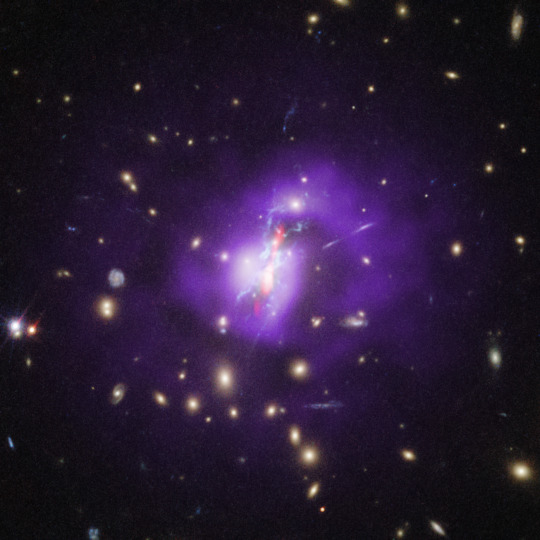
Phoenix Cluster, combining observations from Hubble, Chandra, and VLA.
21 notes
·
View notes
Text

I was taking one of my famous “short cuts” across the American desert and snapped this sunset image at the Very Large Array radio telescope complex near Socorro, New Mexico
#fine art#landscape#photographers on tumblr#pride#photography#queer hard#queer#queer artist#travel#artists on tumblr#art#artist#artwork#photograph#nikon z8#nikonphotography#nikon#radio astronomy#nasa#nrao#very large array#vla#new mexico#Socorro
21 notes
·
View notes
Text

Very Large Array, New Mexico
42 notes
·
View notes
Text

Very Large Array, New Mexico 2023
41 notes
·
View notes
Text

Long, solo miles. US60 NM eastbound.
#photographers on tumblr#original photographers#artists on tumblr#landscape#mostly nature#vertical#black and white#vla#very large array
7 notes
·
View notes
Text






Toy photography of Exo6 Jonathan Archer at the Very Large Array.
3 notes
·
View notes
Video
Very Large Array by Brett Binns Via Flickr: Socorro, New Mexico
#Science#Historical Site#New Mexico#Telescope#Desert#Socorro#Location Recorded#Scenic#Mountains#Mountain#Clouds#Technology#Weather#USA#Very Large Array#flickr#Feeling homesick
12 notes
·
View notes
Text
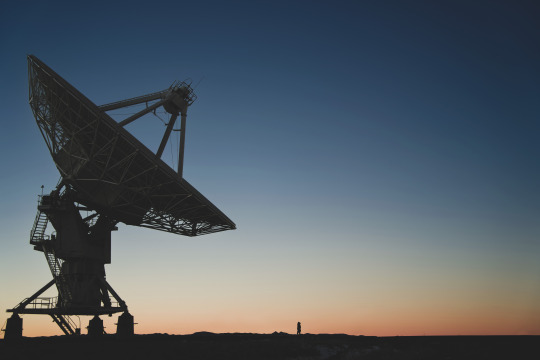
#new mexico#very large array#VLA#photographers on tumblr#photography#astronomy#landscape#landscape photography#sunset#internet dad art
6 notes
·
View notes
Text

Very Large Array, New Mexico
1 note
·
View note
Text
Pirotecnia galáctica desde 23 millones de años luz de distancia
Una galaxia a unos 23 millones de años luz de distancia es el escenario de impresionantes fuegos artificiales en curso. En lugar de papel, pólvora y fuego, este espectáculo de luces galácticas involucra un agujero negro gigante, ondas de choque y vastos depósitos de gas. Este espectáculo de fuegos artificiales galácticos tiene lugar en NGC 4258, también conocida como M106, una galaxia espiral…

View On WordPress
#agencia espacial europea#astrofísica#astroquimica#Cosmología#Estudios#Galaxias#Herschel#Investigaciones#NASA#observatorio de rayos x chandra#Spitzer#Very Large Array#Via lactea
0 notes
Text
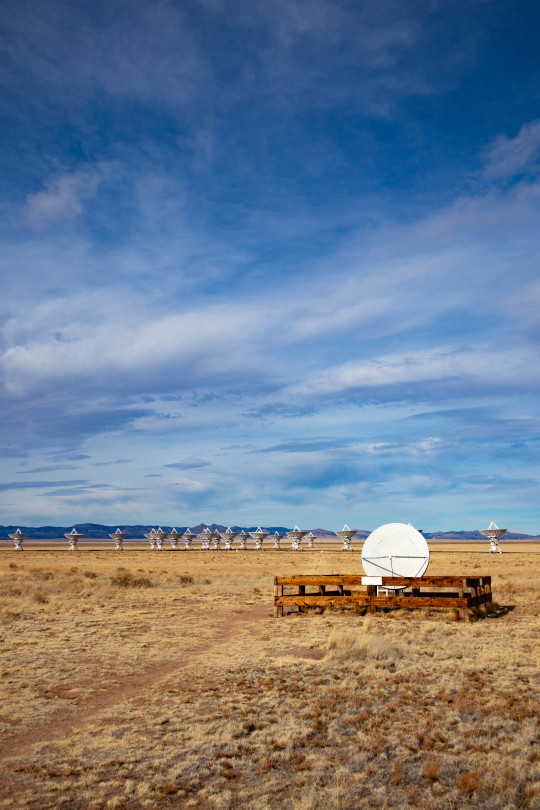
1 note
·
View note
Text
ESO detecta o campo magnético mais distante de uma galáxia
NOTÍCIA: Astrônomos usam o ALMA para detectar o campo magnético mais distante de uma galáxia. A galáxia 9io9 tem um campo magnético tão forte quanto o da Via Láctea
Uma equipe internacional de astrônomos, usando o Atacama Large Millimeter/submillimeter Array (ALMA), um conjunto de antenas localizado no deserto do Atacama, no Chile, fez a primeira detecção confirmada de um campo magnético em uma galáxia muito distante. A galáxia, chamada 9io9, está tão longe que a sua luz demorou mais de 11 bilhões de anos para chegar até nós, o que significa que estamos…
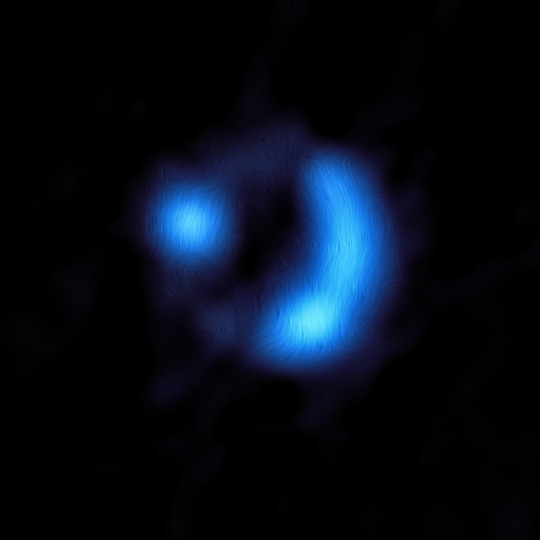
View On WordPress
#9io9#ALMA#Atacama Large Millimeter/submillimeter Array#Campo Magnético#dínamo#ESA#ESO#Galáxia#Grande Nuvem de Magalhães#NASA#Radiotelescópio#Telescópio Espacial Hubble#Telescópio Subaru#Very Large Array#Via Láctea#VLA
0 notes
Text
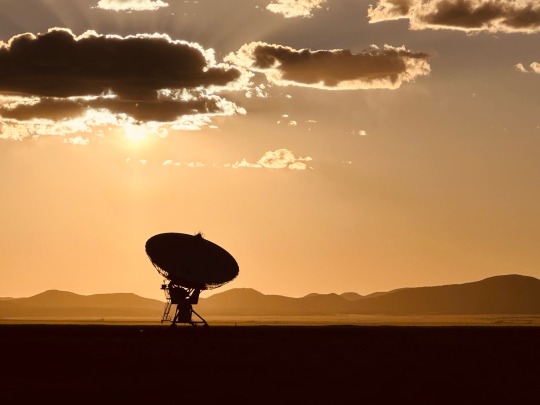
NRAO Very Large Array (VLA), Socorro, NM
24 notes
·
View notes
Link
Astronomy Daily - The Podcast: 10th October 2024 Welcome to Astronomy Daily, your Daily dose of space and Astronomy news. I'm your host, Anna. Today we have an exciting lineup of stories that I can't wait to share with you. First, we'll delve into NASA's Europa Clipper mission, which is ready to embark on an epic journey to Jupiter and its intriguing moon Europa. Then we'll talk about Elon Musk and SpaceX's ambitious plans to launch uncrewed starships to Mars in just two years, paving the way for future human colonization. We'll also uncover a groundbreaking study on fast radio bursts that might finally solve the mystery behind these cosmic phenomena. And if that isn't enough, we'll explore new findings suggesting the moon might still be volcanically active today. Lastly, we'll highlight NASA's innovative solar sail that you can actually spot from Earth. Buckle up, space enthusiasts. Let's dive in. Highlights: - NASA's Europa Clipper Mission: NASA's Europa Clipper spacecraft has reached a significant milestone by passing its final technical review. This means it's now all set for its journey towards Jupiter. With a launch window slated between October 10 and 30th, the mission aims to delve into the mysteries of Jupiter's moon Europa, potentially harboring an ocean beneath its icy crust. - SpaceX's Mars Ambitions: Elon Musk recently announced that SpaceX plans to launch its first uncrewed starships to Mars within the next two years. These missions are crucial for testing the reliability of landing these advanced spacecraft intact on the Martian surface. If successful, crewed flights to Mars could follow just two years later, paving the way for human colonization. - Fast Radio Bursts Mystery Possibly Solved: A groundbreaking new study by the Italian National Institute for Astrophysics has advanced our understanding of fast radio bursts (FRBs). Using the Very Large Array telescope, researchers recorded the weakest persistent radio emission for an FRB, shedding light on the mysterious origins of these powerful cosmic events. - Volcanic Activity on the Moon: Recent findings from the Chinese Chang'e 5 mission suggest that the moon might still be volcanically active. Tiny glass beads found in lunar samples indicate that volcanic activity might have occurred as recently as 123 million years ago, challenging the traditional belief that lunar volcanism ceased 3 to 3.8 billion years ago. - NASA's Solar Sail: NASA's advanced composite solar sail system is now visible from many locations around the world. This groundbreaking solar sail, which harnesses sunlight for propulsion, represents an exciting step towards more sustainable and accessible deep space missions. Engage with NASA's "Spot the Sail" campaign and track the solar sail using the free NASA app. For more space news, be sure to visit our website at astronomydaily.io. There you can sign up for our free Daily newsletter, catch up on all the latest space and Astronomy news with our constantly updating news feed, and listen to all our back episodes. Don't forget to follow us on social media. Just search for #AstroDailyPod on Facebook, X, YouTubeMusic, and TikTok to stay connected with our community and never miss an update. Thank you for tuning in, and remember to keep your eyes on the skies. Until next time, may you be blessed with clear skies. Sponsor Links: NordVPN NordPass Malwarebytes Proton Mail Become a supporter of this podcast for commercial-free editions not very much moeny: https://www.spreaker.com/podcast/astronomy-daily-the-podcast--5648921/support
#array#binary#bursts#chang'e#clipper#elon#europa#fast#inaf#large#magnetar#mars#mission#musk#nasa#radio#spacex#telescope#very#x-ray
0 notes
Text
Scientists naming shit gives me life

CRISPR was already on thin fucking ice as a serious name for a biotech technique and now they made up CRISPY-BRED are you joking
#looking at the very large array#and the extremely large telescope#and like#all of the quarks#plus WIMPs and MACHOs
5K notes
·
View notes
